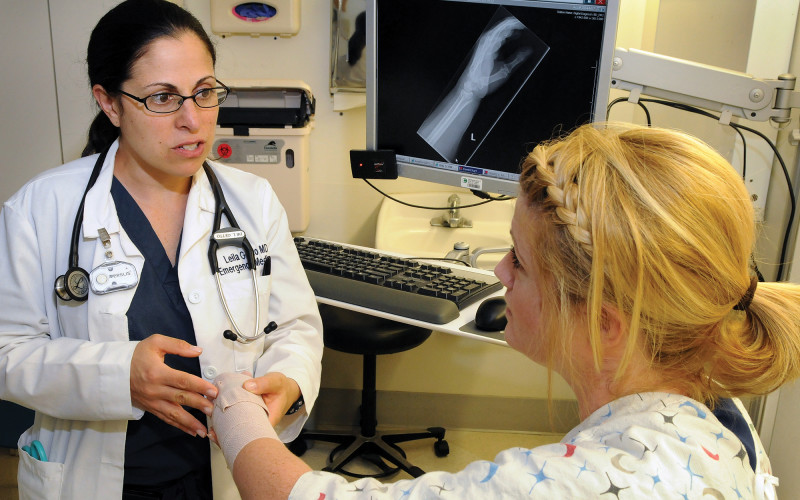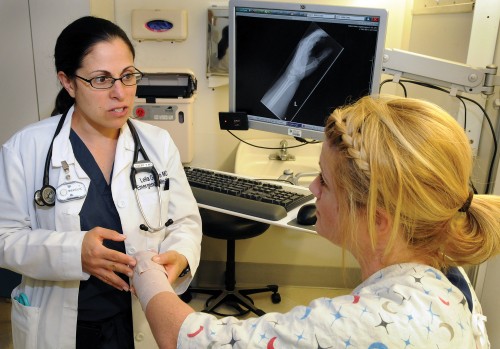Emergency Department bone initiative aims to reduce secondary fragility fractures


Fragility fractures, the result of unchecked osteoporosis, provide one clear example of the need for prevention.
“Hip-fracture patients have sustained an earlier fragility fracture of some sort, typically a wrist fracture, 45 percent of the time,” said Timothy Manzone, M.D., director of Nuclear Medicine for Christiana Care. He calls the forewarning provided by a broken bone an opportunity to raise awareness and encourage intervention.
Richard Derman, M.D., chairman of Obstetrics & Gynecology, agrees: “People who sustain a wrist fracture tend to see it as just that and nothing more. We want to ensure they know that this type of break puts them at three or four times greater risk for hip fracture; that wrist fracture is an indicator of underlying osteoporosis; and that they’re almost always at increased risk for spinal compression fractures as well.”
Eleven units within Christiana Care — Emergency Medicine, Internal Medicine, Family Medicine, OB-GYN, Endocrinology, Rheumatology, Orthopaedic Surgery, Radiology and Nuclear Medicine — are coordinating a pilot program to ensure that patients coming to the Emergency Department with fragility fractures know what type of injury they have, why a fragility fracture is important and how to reduce risk. The new initiative will relay similar information to the patient’s primary-care provider.
“We’re trying to take the burden of coordination off the primary care doctor,” Dr. Manzone said. “Because osteoporosis is asymptomatic until there’s a fracture, there’s a greater need for physicians and patients to be more aware.”
The pilot project will address the issue from the standpoint of both patient and primary care provider.
The follow-up rate for fragility fractures in the U.S. is only around 20 percent. “Now we are calling patients with all this information, sending a packet in the mail, and following up with them to encourage evaluation,” said Leila Getto, M.D., Emergency Medicine, who leads the team overseeing the research project. “Our focus here is secondary prevention. Once that first wrist fracture has occurred, we’ve missed the opportunity for the primary prevention that would include proper diet, exercise and earlier screening.”
Information will go to primary care providers in the mail, and in some cases electronically. The ultimate goal is to have a way for electronic notification to appear prominently in the PCPs own system and populate patient charts with relevant details, such as dual X-ray absorptiometry (DXA) scores.
Dr. Derman hopes the program will raise physician and patient awareness, lead to increased diagnostic testing with DXA tests, and ultimately reduce the rate of fractures.
“Getting people on appropriate treatment — such as calcium, vitamin D or suitable medications — can decrease subsequent fractures by 50 to 60 percent. Few things in medicine can make that kind of a difference,” said Dr. Derman.
“There are other places, elsewhere in the U.S. and beyond, with comprehensive programs like this, and they’ve been able to reduce hip fractures by 25 to 35 percent,” Dr. Manzone concludes. “We’re working through the Emergency Department now because that’s where people end up if evaluation and prevention aren’t in place.”
This project was made possible by a Christiana Care Community Service and Education grant.